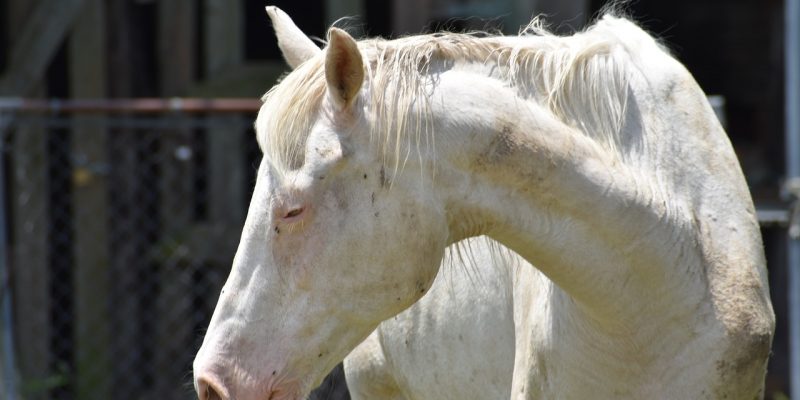Prepare to be amazed as we delve into the fascinating world of animals with superpowers. These extraordinary creatures possess abilities that go far beyond human imagination. From the ability to regenerate limbs to generating electric shocks, these animals showcase the true wonders of nature. Let’s explore the incredible powers of these 10 amazing and unique animals that will leave you in awe.
The Immortal Jellyfish
The Immortal Jellyfish is an extraordinary creature that possesses a truly remarkable superpower – the ability to regenerate itself. Unlike most other animals, which age and eventually die, the immortal jellyfish has the ability to revert back to its juvenile form after reaching adulthood. This process, known as transdifferentiation, allows the jellyfish to essentially start its life cycle all over again.
When faced with unfavorable conditions, such as starvation or physical damage, the immortal jellyfish can undergo a transformation where its cells change and differentiate, effectively turning back the clock on its aging process. This incredible ability allows the jellyfish to escape death and continue its life cycle indefinitely.
To put it simply, the immortal jellyfish is like a real-life version of the mythical phoenix, constantly rising from its own ashes. This unique superpower makes the jellyfish a fascinating creature to study and marvel at. Imagine if humans had the ability to reverse the aging process and rejuvenate themselves – it would truly be a superpower beyond imagination.
The Pistol Shrimp
The Pistol Shrimp is an extraordinary creature that possesses a hunting technique like no other. With its unique abilities, it is able to create a sonic boom and generate temperatures hotter than the sun. This remarkable hunting technique allows the Pistol Shrimp to stun and capture its prey with incredible precision.
Using its powerful claw, the Pistol Shrimp is able to snap it shut at an astonishing speed, creating a cavitation bubble. This bubble then collapses, producing a shockwave that can reach speeds of up to 60 miles per hour. The force of this collapse is what creates the sonic boom, stunning nearby prey and allowing the Pistol Shrimp to easily capture its meal.
In addition to the sonic boom, the Pistol Shrimp’s claw also generates temperatures of over 4,700 degrees Celsius (8,500 degrees Fahrenheit) for a brief moment. This intense heat is hotter than the surface of the sun and is used to immobilize or kill its prey. The Pistol Shrimp’s hunting technique is truly a marvel of nature, showcasing the incredible adaptations and superpowers that exist in the animal kingdom.
The Electric Eel
The Electric Eel is an extraordinary creature that possesses a unique ability to generate powerful electric shocks. It uses specialized organs called electrocytes to produce these shocks, which can reach up to 600 volts. These shocks serve various purposes, including navigation, communication, and hunting prey.
When it comes to navigation, the electric eel emits weak electric pulses that create an electric field around its body. It then uses specialized receptors to detect changes in the electric field, allowing it to navigate through dark and murky waters with ease. This ability is similar to how bats use echolocation to navigate their surroundings.
In terms of communication, electric eels use electric signals to communicate with other eels. These signals can vary in frequency and duration, conveying different messages to other eels. This unique form of communication helps them establish territories, attract mates, and warn off potential threats.
One of the most fascinating aspects of the electric eel’s electric shocks is its hunting strategy. When hunting, the eel can generate powerful electric shocks that stun or immobilize its prey. This allows the eel to easily capture and consume its prey, which primarily consists of small fish and invertebrates.
In conclusion, the electric eel’s specialized organs and ability to generate electric shocks are truly remarkable. These shocks enable it to navigate its environment, communicate with other eels, and effectively hunt for prey. The electric eel serves as a fascinating example of an animal with superpowers that go beyond human imagination.
The Axolotl
The Axolotl is a fascinating creature that possesses incredible regenerative abilities. This aquatic salamander has the remarkable ability to regrow entire limbs, including bones, muscles, and nerves. Not only can it regrow limbs, but it can also regrow its spinal cord, heart, and even parts of its brain. This makes the Axolotl one of the few animals in the world capable of such extensive regeneration.
Scientists have been studying the Axolotl’s regenerative abilities in the hopes of unlocking the secrets to human tissue regeneration. The Axolotl’s regenerative process involves the activation of certain genes and the formation of a specialized structure called a blastema, which serves as a platform for tissue regrowth. This unique ability allows the Axolotl to heal wounds and recover from injuries that would be fatal for most other animals.
The Axolotl’s regenerative abilities have captured the attention of researchers and have the potential to revolutionize the field of regenerative medicine. By understanding the mechanisms behind the Axolotl’s regrowth, scientists hope to apply this knowledge to help humans regenerate damaged or lost tissues and organs. The Axolotl truly showcases the extraordinary powers of nature and serves as a source of inspiration for medical advancements.
The Mantis Shrimp
The Mantis Shrimp is a fascinating creature that possesses an incredible vision system, allowing it to perceive colors and polarized light that are completely invisible to humans. This unique ability sets it apart from any other known animal on Earth.
Unlike humans, who have three types of color receptors in their eyes, the mantis shrimp has an astonishing sixteen types of color receptors. This means that they can detect a wide range of colors, including ultraviolet and polarized light. To put it into perspective, humans can only see a fraction of the colors that the mantis shrimp can perceive.
But what exactly is polarized light? Well, light waves normally travel in all directions, but when they bounce off a surface, they become polarized, meaning they vibrate in a specific direction. While humans cannot detect this polarization, mantis shrimps can. This gives them a unique advantage in their environment, as they can spot prey, predators, and even potential mates by detecting the polarized light reflected off their bodies.
The mantis shrimp’s incredible vision is not only useful for survival, but it also plays a role in communication. These colorful creatures use their vibrant appearance and intricate visual signals to communicate with each other, conveying information about their intentions, dominance, and courtship rituals.
In conclusion, the mantis shrimp’s ability to perceive colors and polarized light that are invisible to humans is truly extraordinary. Their complex visual system allows them to navigate their environment, communicate with others, and thrive in their unique underwater world.
The African Elephant
The African Elephant is an incredible creature that possesses extraordinary communication skills. These majestic animals have the ability to communicate through low-frequency sounds that can travel long distances. This unique form of communication allows them to stay connected with their herd members even when they are far apart.
One of the main ways African elephants communicate is through deep rumbling calls. These calls can be heard by other elephants up to several miles away. They use these calls to convey important messages such as warning signals, mating calls, and gathering the herd. It’s fascinating to think that these gentle giants have a language of their own, and they rely on these low-frequency sounds to stay in touch.
In addition to rumbling calls, African elephants also use other forms of communication such as body language and gestures. They use their trunks, ears, and tails to convey different messages to other elephants. For example, a raised trunk can signal dominance or aggression, while a relaxed tail swaying gently from side to side indicates a calm and content state.
Furthermore, African elephants are known to be highly social animals, and their communication skills play a crucial role in maintaining the cohesion of their herd. They rely on these unique abilities to coordinate group movements, find food and water sources, and protect each other from potential threats.
In conclusion, the African Elephant possesses extraordinary communication skills that allow them to stay connected with their herd members through low-frequency sounds. Their rumbling calls and body language serve as a means of conveying important messages and maintaining the cohesion of the herd. These remarkable creatures continue to fascinate researchers and wildlife enthusiasts alike with their incredible abilities.
The Cheetah
The cheetah is a majestic and awe-inspiring creature that possesses incredible speed and agility, making it the fastest land animal on Earth. With its sleek and streamlined body, the cheetah is built for speed, enabling it to reach astonishing velocities of up to 70 miles per hour in just a matter of seconds. This remarkable ability allows the cheetah to chase down its prey with unparalleled precision and efficiency.
Not only does the cheetah possess impressive speed, but it also exhibits remarkable agility. Its flexible spine, long legs, and non-retractable claws provide the cheetah with exceptional maneuverability, allowing it to make sharp turns and sudden changes in direction while in pursuit of its prey. This combination of speed and agility makes the cheetah a formidable hunter and a true marvel of the animal kingdom.
To put the cheetah’s speed into perspective, imagine a world-class sprinter running at their maximum speed. Now, imagine that sprinter being overtaken by a cheetah effortlessly. Such is the extraordinary speed of this magnificent creature. The cheetah’s ability to accelerate rapidly and maintain high speeds for short distances is truly unparalleled.
It is important to note that while the cheetah is unmatched in terms of speed, its incredible abilities come at a cost. The cheetah’s body is designed for short bursts of intense speed, and it quickly becomes exhausted after a chase. This means that the cheetah must carefully choose its moments to exert its incredible power and conserve energy for future hunts.
In conclusion, the cheetah’s incredible speed and agility make it a fascinating and awe-inspiring animal. Its ability to reach speeds of up to 70 miles per hour is unparalleled in the animal kingdom, and its agility allows it to navigate its environment with unmatched precision. The cheetah truly embodies the concept of superpowers in the animal world.
The Peregrine Falcon
The Peregrine Falcon is a majestic bird known for its incredible diving speed. It is considered the fastest animal in the world, capable of reaching speeds of over 240 miles per hour while hunting. This astonishing speed allows the falcon to swoop down on its prey with unmatched precision and agility.
When the Peregrine Falcon spots its target from high above in the sky, it goes into a steep dive called a stoop. During this dive, the falcon tucks its wings close to its body to reduce air resistance and increase its speed. It then plummets towards its prey, accelerating at an astonishing rate.
The Peregrine Falcon’s speed is truly remarkable, enabling it to catch fast-flying birds in mid-air. Its sharp eyesight and aerodynamic body shape contribute to its hunting success. With such incredible speed and agility, the Peregrine Falcon is a true marvel of nature.
The Archerfish
The archerfish is a fascinating creature known for its incredible hunting strategy. This unique fish has the ability to shoot down insects by spitting jets of water with remarkable accuracy. It uses its specialized mouth to create a water pistol effect, propelling water towards its prey. The archerfish can accurately aim and hit insects that are perched on leaves or branches above the water’s surface.
What makes the archerfish’s hunting strategy even more impressive is its ability to adjust the force and trajectory of its water jets based on the distance and position of its target. This precision allows the archerfish to knock down insects from a considerable distance away. It’s like having a built-in water gun that never misses!
To achieve such accuracy, the archerfish has developed a unique anatomy. It has a groove in its mouth that acts as a barrel, allowing it to channel and direct the water flow. The fish can also adjust the shape of its mouth to create a narrow jet or a wider spray, depending on the size and position of the prey.
Not only is the archerfish’s hunting strategy impressive, but it also showcases the incredible adaptability and intelligence of this species. It has learned to use its surroundings to its advantage, utilizing the water as a tool for capturing its prey. Next time you see an archerfish in action, take a moment to appreciate the remarkable accuracy and ingenuity of this unique hunting strategy.
Frequently Asked Questions
- Q: How does the immortal jellyfish regenerate?
A: The immortal jellyfish has the remarkable ability to revert back to its juvenile form after reaching adulthood. This process, known as transdifferentiation, allows it to regenerate its cells and essentially start its life cycle anew.
- Q: How does the pistol shrimp create a sonic boom?
A: The pistol shrimp has a specialized claw that can snap shut at an incredible speed, creating a cavitation bubble. When the bubble collapses, it produces a powerful shockwave and a loud sound, similar to a sonic boom.
- Q: How does the electric eel generate electric shocks?
A: The electric eel possesses specialized electric organs that can generate powerful electric shocks. These shocks are used for navigation, communication, and stunning prey. The electric eel’s organs contain thousands of cells called electrocytes, which produce electric currents.
- Q: How does the axolotl regrow its body parts?
A: The axolotl is known for its remarkable regenerative abilities. It can regrow not only its limbs but also its spinal cord, heart, and even parts of its brain. The axolotl’s cells have a high capacity for regeneration and can replace damaged or lost tissues.
- Q: How does the mantis shrimp perceive colors and polarized light?
A: The mantis shrimp has specialized eyes that can perceive a wide range of colors and even polarized light. Its eyes contain 16 types of photoreceptor cells, compared to the three types found in humans. This allows the mantis shrimp to see a spectrum of colors and detect subtle variations in light polarization.
- Q: How do African elephants communicate through low-frequency sounds?
A: African elephants communicate using a variety of vocalizations, including low-frequency sounds known as infrasounds. These infrasounds can travel long distances and are used for long-distance communication between individuals or groups of elephants.
- Q: How fast can a cheetah run?
A: The cheetah is the fastest land animal and can reach speeds up to 70 miles per hour. Its slender body, long legs, and flexible spine contribute to its exceptional speed and agility.
- Q: How fast can a peregrine falcon dive?
A: The peregrine falcon is known for its astonishing diving speed. It can reach speeds of over 240 miles per hour while hunting, making it one of the fastest animals in the world.
- Q: How does the archerfish shoot down insects?
A: The archerfish has a unique hunting strategy. It shoots jets of water from its mouth with remarkable accuracy, knocking down insects perched on nearby vegetation. The archerfish can adjust the trajectory of its water jets to compensate for the refraction of light in water.









